#Ammophila wasps
Explore tagged Tumblr posts
Text
Beautiful Ammophila pectipennis Wasps Love the Nectar of Fall Wildflowers
Wasp with an Appetite. Until 2023, I had never seen, or at least never noticed these beautiful Ammophila pectipennis wasps. They’re supposed to be fairly uncommon and don’t even have a common name. Since 2023, I’ve seen quite a few of them, especially in the fall. I haven’t seen as many this fall as I did last fall, but there are still quite a few, particularly on the blackjack flowers. I love…
#Ammophila pectipennis#Ammophila pectipennis wasps#Ammophila wasps#beautiful insects#black and red wasps#colorful insects#colorful wasps#fall wasps#Florida insects#Florida wasps#genus Ammophila#insect photographs#insect photography#insects#large insects#solitary wasps#thin wasps#wasp photography#wasps feeding#wasps photographs
0 notes
Text

Common Thread-waisted Wasp (Ammophila procera)
July 15, 2024
John Heinz National Wildlife Refuge, Tinicum, Pennsylvania
I've said it before, but I hate finding some cool new-to-me bug and finding out it has the word "common" in its name.
#bug#bugs#photographers on tumblr#Ammophila procera#Common Thread-waisted Wasp#bugblr#entomology#insects#insect#nature#wildlife photography#animals#wasp#wasps#hymenoptera
135 notes
·
View notes
Text
Cuckoo wasps make the perfect ping pong balls....if you're a Sphecid!
Sphex ichneumoneus and Ammophila sp. enjoying a game made possible by their Chrysidid friend. This concept was inspired by an old doodle from 2018.

#entomology#wasps#wasp#insect#hymenoptera#apocrita#aculeata#cartoon#Apoidea#Chrysidoidea#Chrysididae#Chrysis#Sphecidae#Sphexichneumoneus#Ammophila#pingpong#game#silly#comic
295 notes
·
View notes
Text
@browzerhistory submitted: found a weird guy doin weird stuff in [removed] (remove location pls :3)
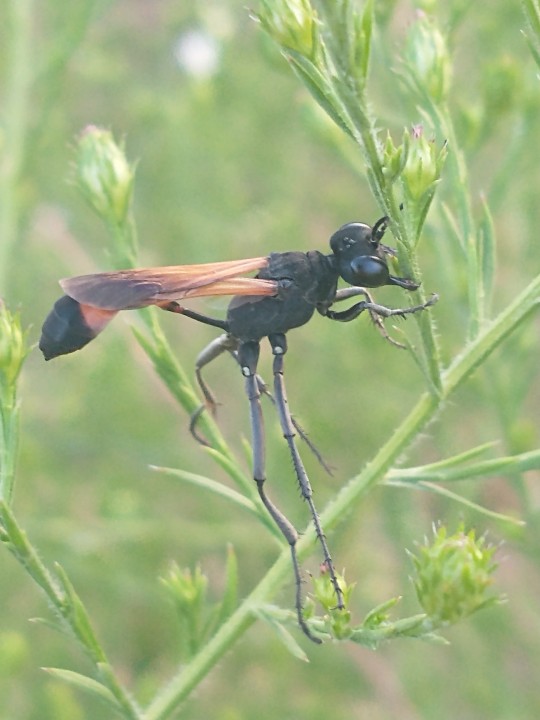
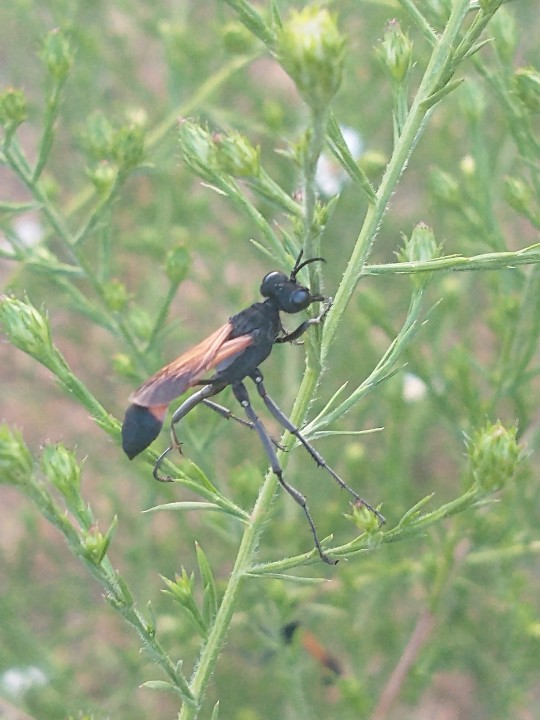
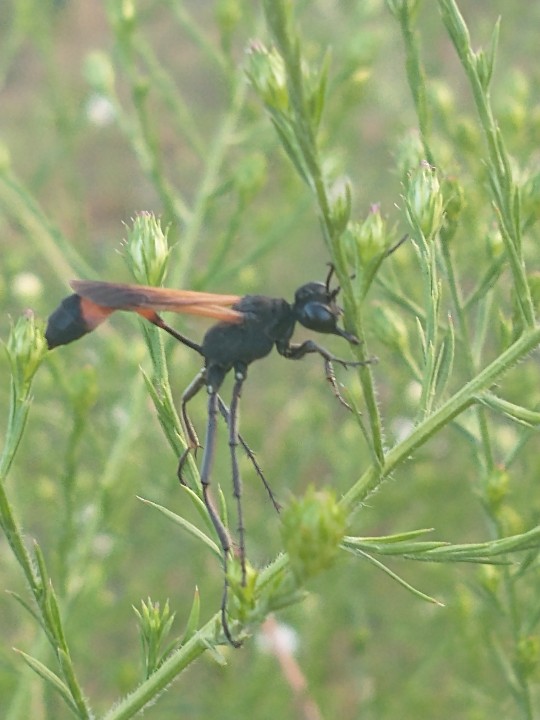
i think it's some sort of wasp? there were two or three on the plant, which was an aster. they were all sitting like that, sort of biting the plant, and barely moving except for wiggling their butts and the occasional antennae twitch, even when i got really close to get these photos. there was a bee and a fly acting strangely too - my dad thinks it's just because it was cooling down outside but i'm not sure. any idea what this could be?
This sweet lil friend is a thread-waisted sand wasp, Ammophila pictipennis. They'll grip plants with their mandibles and chill out when it's night time or if it's too cold out. Sort of their version of sleeping. Takin' a lil wasp nap :)
#animals#insects#bugs#submission#wasp#thread waisted wasp#thread waisted sand wasp#Ammophila pictipennis
123 notes
·
View notes
Text


Some type of thread-waisted sand wasp! Ammophila is the genus. iNaturalist had three different species guesses that all looked identical to me. If you feel confident you can identify it, here's the observation link! Seen on 5/19/2024 in central Illinois.
#bugs#bugblr#insects#insect#bug#entomology#oc#iNaturalist#wasp#wasps#hymenoptera#ammophila#sphecidae
18 notes
·
View notes
Text

Field Sand Wasp, Ammophila campestris Canon 400D EF 100 2.8 f/11 1/160 iso: 400 Milovice, Czech Republic 6/18/2009
#SandWasps#Wasps#hymenoptera#Ammophila#Sphecidae;#insects#nvertebrates#macro#grasslands#invertebrates#insectphotography#macrophotography#insect#canon
2 notes
·
View notes
Text
- A female Ammophila using a tiny pebble, seed, or piece of wood to fill in the entrance of her burrow
*tamp tamp*
ah i see youve noticed me tamping down the soft earth
#did u know ammophila digger wasps have been known to use tools? it's an extremely cool combination of instinctual behaviour#they're also soooo chill like scientists have remarked on how easy they are to work with chill#the solitary ones tend to be like that
267K notes
·
View notes
Text
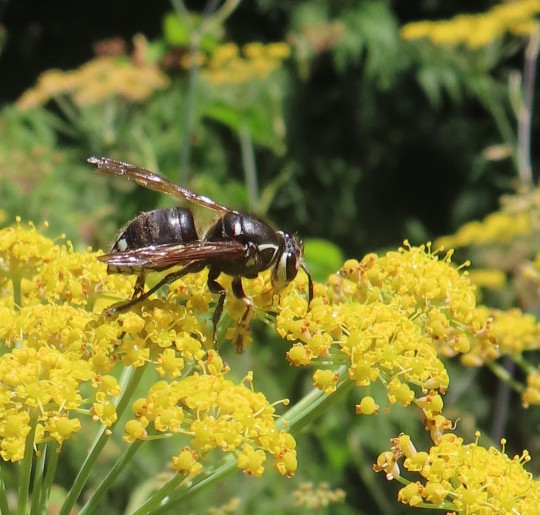
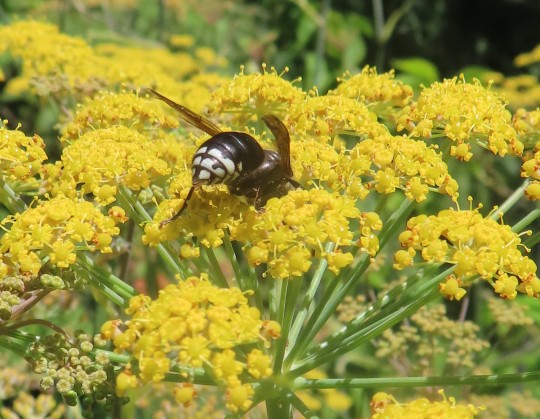
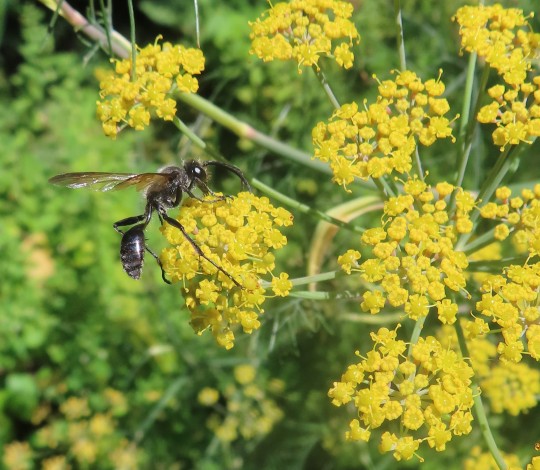
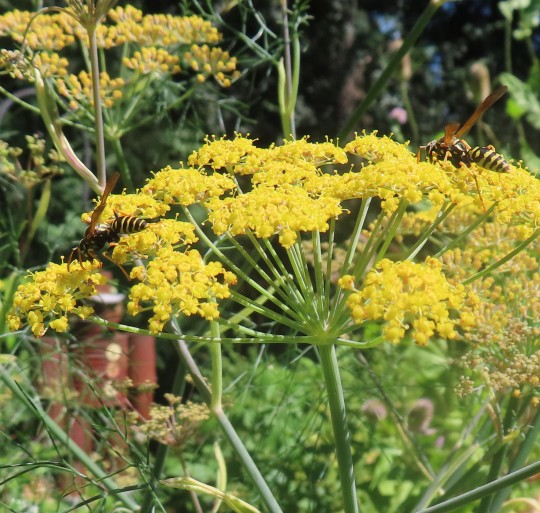
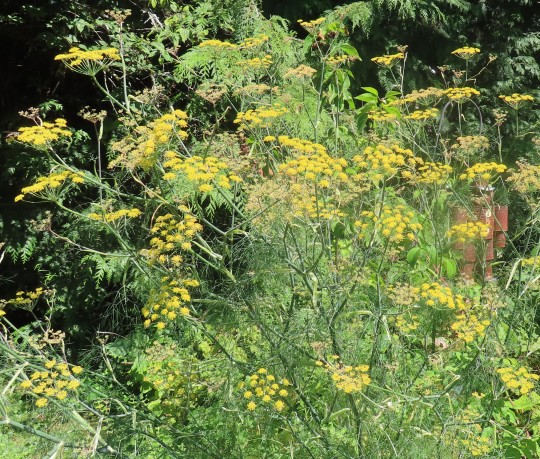
Foeniculum vulgare (fennel) and (Dolichovespula maculata (bald-faced hornet) plus Ammophila procera (common thread-waisted wasp)
We planted this fennel three or four years ago so this short-lived perennial is probably at the end of it's natural lifespan. Fennel looks much like it's relative dill (Anethum graveolens) but fennel is usually much bigger and twice as tall (up to eight feet). Both fennel and dill impart a liquorish flavor to food and both have edible bulbs.
Fennel is a member of the carrot family Apiaceae and in early August, it's like an insect magnet. Like bees, these wasps drink nectar to generate the energy to fly. But, unlike bees, wasps are also voracious meat-eaters and provide your garden with a form of natural caterpillar control.
#flowers#photographers on tumblr#fennel#wasp#hornet#fleurs#flores#fiori#blumen#bloemen#our garden#tinman#Vancouver
81 notes
·
View notes
Note



no need for ID, I am just here to offer some bug ass I photographed while at a state park
Cuties!
Long-legged fly (Condylostylus sp.), Tachnid fly (Archytas sp.), and Comon Thread-wasted Wasp (Ammophila procera).
79 notes
·
View notes
Text
Wasps enter the stone age
Think about animals that use tools. The first ones that come to mind are probably us, other primates and birds. Some of you may think of octopods and even sea urchins. But we don't usually associate insects with tool use.
Here it's important for me to distinguish between tool use and construction. Construction can involve the usage of external materials to build structures that aid the animals - think carpenter bees and termites. Tool use, on the other hand, involves the use of external material to aid in a specific task. Crucially, tools are often discarded after the task is complete.
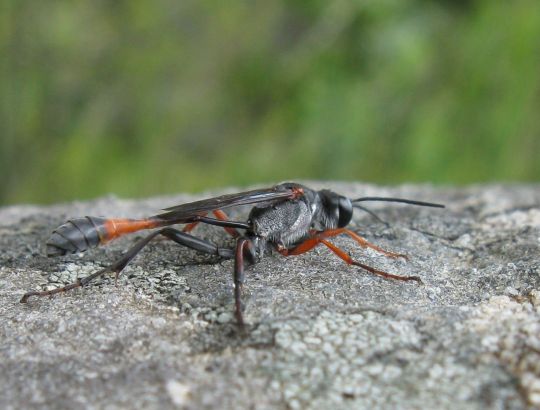
ID: a close-up image of a species of digger wasp, Ammophila ferrugineipes. It has a black body with orange sections on its abdomen and legs. The body is incredibly slender, more so than the more common yellowjacket wasps. It is sat upon a grey rock, and the background is a blurred green.
Digger wasps are a group of wasps that make a nest for their young by, you guessed it, digging. Whilst some wasps use their abdomens to pack down dirt, some use their heads and mandibles to do the same. And interestingly, almost all of these wasps are also NERDS and have figured out how to use tools. They'll take stones and pebbles and repeatedly tap the soil in order to compact it, thereby improving the structural integrity of their burrows. Whilst some then use those stones to block the entrance, most will just throw them away after use.
Isn't that cool? Wasps! In the stone age! Just goes to show that neural complexity and tool use don't really go hand in hand, and that surprising behaviours can develop all across the animal kingdom.
70 notes
·
View notes
Text
Just Another Beautiful Ammophila Wasp
Just Another Beautiful Ammophila Wasp shows readers a macro photo of this fairly uncommon Florida wasp. It explains that although they are generally uncommon the author/artist has encountered them frequently this year.
Tiptoe Through the Sumac These guys are fairly uncommon wasps, and I had never seen one before this spring. They’re uncommon enough that they don’t even have a common name, just Ammophila pectipennis. I guess they have liked our unusual weather this year because I’ve been seeing them all over all this summer. They’re very pretty and quite docile, so I’m happy to have another pollinator in the…

View On WordPress
#Ammophila pectipennis#Ammophila photographs#Ammophila wasps#beautiful wasps#black and red insects#black and red wasps#colorful wasps#Florida insects#Florida wasps#genus Ammophila#insect photographs#insect photography#insects#large wasps#photography#pollinators#uncommon insects#uncommon wasps#wasp photographs#wasp photography#wasps
0 notes
Text
Year In Wasps 2024










Left to right and top to bottom: Vespula squamosa, possibly Eurytoma sp, unidentified parasitoid w/ stink bug eggs, Chrysis angolensis, Pseudomethoca frigida, Gelis sp, Brachymeria podagrica, tribe Psenini w/ leafhopper, Ammophila pictipennis, family Ichneumonidae
15 notes
·
View notes
Text
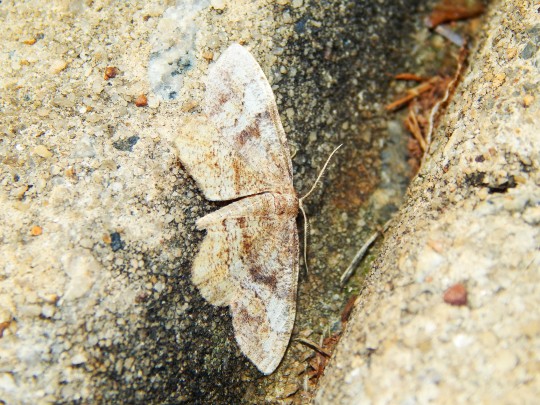
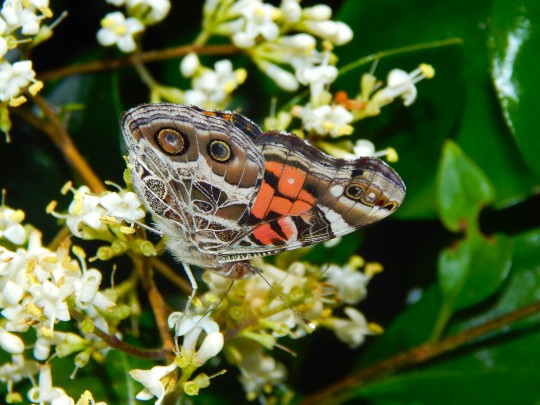
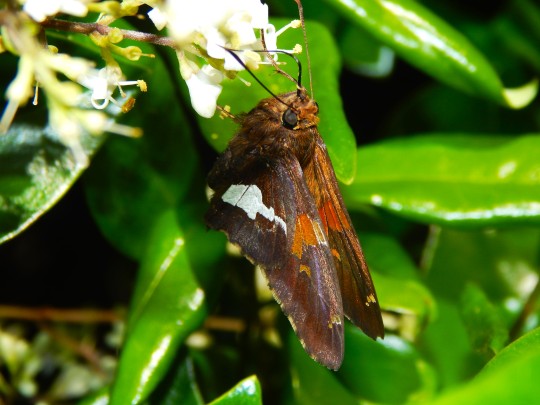
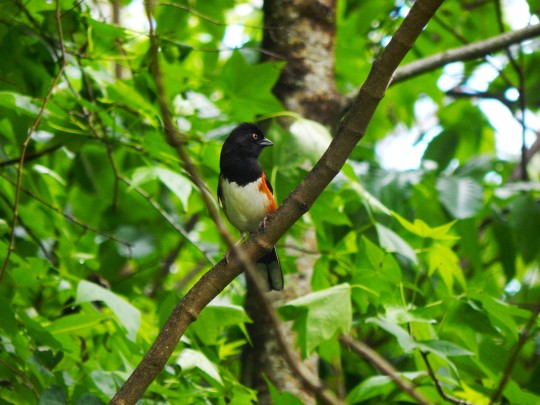





Some favorite sightings of this week. Speculative ID's in order: Geometridae moth, V. virginiensis, E. clarus, P. erythrophthalmus, A. nasatum, A. mellifera, unknown wasp, A. fumipennis, and an Ammophila wasp. My iNaturalist 📸: Nikon COOLPIX L820
#photography tag#lepidoptera#isopoda#hymenoptera#odonata#moth#butterfly#eastern towhee#isopod#honeybee#wasp#damselfly#thread waisted wasp
9 notes
·
View notes
Photo
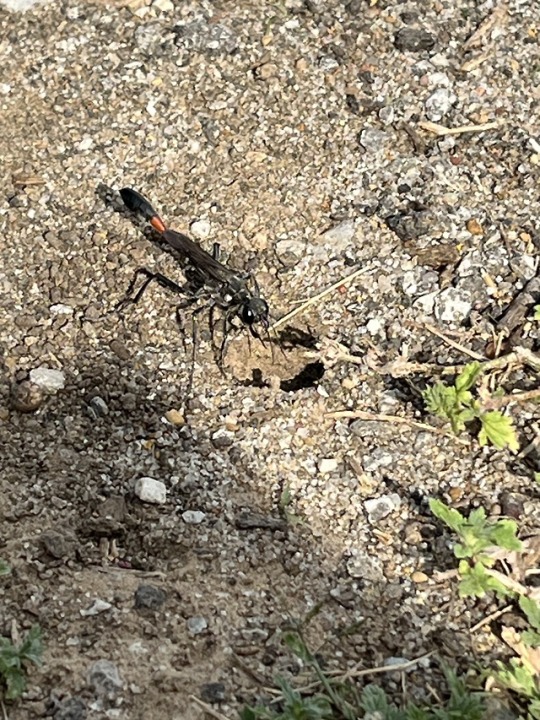
Spinch (c**********[email protected]) submitted: hello! this little fella was digging a hole by my bus stop out in oklahoma and my friend said it might be a mud dauber of sorts! was she perhaps correct?
Hi! This lovely lady is a thread-waisted wasp in the genus Ammophila - probably Ammophila procera. This species digs nests in the ground, so she is not a mud dauber. Mud daubers use mud to create nests on surfaces.
57 notes
·
View notes
Text
She is a thread-waisted wasp!
The name thread-waisted wasp refers to an entire family of wasps (Sphecidae) but also commonly refers specifically to this little one. Her genus is Ammophila, though I’m not sure of the species!
She and her fellow thread-waists are delightfully elegant and elusive, and by far my favorite wasps.



wake again after rest
12K notes
·
View notes
Text
Fwd: Job: UExeter.FieldAssistants.InsectSociality
Begin forwarded message: > From: [email protected] > Subject: Job: UExeter.FieldAssistants.InsectSociality > Date: 14 May 2024 at 05:27:56 BST > To: [email protected] > > > We seek multiple fieldwork assistants to help research how helping may > have evolved using a wild digger wasp population (Ammophila) from early > June until mid-end of August 2024. > > The assistants will be working alongside a Postdoctoral researcher > and several other field assistants at a nature reserve just outside > of Guildford, Surrey, UK. A. pubescens is a non-social wasp which does > not sting humans, and lays each egg in a separate burrow containing a > paralysed caterpillar. The female wasp will provide further food items > as her larvae grow, making the species an ideal system for testing how > helping may have evolved. A couple of our previous papers on this system > are: (1) Field & Brace (2004). Pre-social benefits of extended parental > care. Nature 428: 650-652; (2) Field et al. (2023). Brood parasites > that care: alternative nesting tactics in a subsocial wasp. American > Naturalist 202(5): 655-666. > > The fieldwork involves: observing and manipulating provisioning > behaviour, handling and marking wasps, setting up video cameras, > uploading video footage and data entry. In warm weather, this > involves long days in the field! Because the work involves > recording colour marks on individual animals, the job would not > be suitable for someone who is colour-blind. See our research > group website for more information about the kind of work we do > (https://ift.tt/qJFXTjs). > > Experience of conducting fieldwork (especially with insects) and a degree > (or working towards a degree) in a Behaviour/Evolution/Ecology-related > topic are desired. Flexibility around the start and end date of the > assistant position is required. The successful applicants must have > enthusiasm for fieldwork, and will obtain excellent experience of > cutting-edge research. > > Shared accommodation in Surrey is provided, but assistants are required > to pay for their own food/personal expenses. Assistants receive £125 > per week to help cover personal costs. > > Please contact Lucy Winder [email protected] to discuss these > positions further, attaching a CV. > > Dr Lucy Winder (she/her) > > Postdoctoral Research Fellow > University of Exeter > www.exeter.ac.uk > Stella Turk Building, Treliever Road, Penryn, Cornwall TR10 9FE > > > "Winder, Lucy"
0 notes